So, you want this:

We're going to implement a container view called EqualIconWidthDomain so that we can draw the image shown above with this code:
struct ContentView: View {
var body: some View {
EqualIconWidthDomain {
VStack(alignment: .leading) {
Label("People", systemImage: "person.3")
Label("Star", systemImage: "star")
Label("This is a plane", systemImage: "airplane")
}
}
}
}
You can find all the code in this gist.
To solve this problem, we need to measure each icon's width, and apply a frame to each icon, using the maximum of the widths.
SwiftUI provides a system called “preferences” by which a view can pass a value up to its ancestors, and the ancestors can aggregate those values. To use it, we create a type conforming to PreferenceKey, like this:
fileprivate struct IconWidthKey: PreferenceKey {
static var defaultValue: CGFloat? { nil }
static func reduce(value: inout CGFloat?, nextValue: () -> CGFloat?) {
switch (value, nextValue()) {
case (nil, let next): value = next
case (_, nil): break
case (.some(let current), .some(let next)): value = max(current, next)
}
}
}
To pass the maximum width back down to the labels, we'll use the “environment” system. For that, we need an EnvironmentKey. In this case, we can use IconWidthKey again. We also need to add a computed property to EnvironmentValues that uses the key type:
extension IconWidthKey: EnvironmentKey { }
extension EnvironmentValues {
fileprivate var iconWidth: CGFloat? {
get { self[IconWidthKey.self] }
set { self[IconWidthKey.self] = newValue }
}
}
Now we need a way to measure an icon's width, store it in the preference, and apply the environment's width to the icon. We'll create a ViewModifier to do those steps:
fileprivate struct IconWidthModifier: ViewModifier {
@Environment(\.iconWidth) var width
func body(content: Content) -> some View {
content
.background(GeometryReader { proxy in
Color.clear
.preference(key: IconWidthKey.self, value: proxy.size.width)
})
.frame(width: width)
}
}
To apply the modifier to the icon of each label, we need a LabelStyle:
struct EqualIconWidthLabelStyle: LabelStyle {
func makeBody(configuration: Configuration) -> some View {
HStack {
configuration.icon.modifier(IconWidthModifier())
configuration.title
}
}
}
Finally, we can write the EqualIconWidthDomain container. It needs to receive the preference value from SwiftUI and put it into the environment of its descendants. It also needs to apply the EqualIconWidthLabelStyle to its descendants.
struct EqualIconWidthDomain<Content: View>: View {
let content: Content
@State var iconWidth: CGFloat? = nil
init(@ViewBuilder _ content: () -> Content) {
self.content = content()
}
var body: some View {
content
.environment(\.iconWidth, iconWidth)
.onPreferenceChange(IconWidthKey.self) { self.iconWidth = $0 }
.labelStyle(EqualIconWidthLabelStyle())
}
}
Note that EqualIconWidthDomain doesn't just have to be a VStack of Labels, and the icons don't have to be SF Symbols images. For example, we can show this:

Notice that one of the label “icons” is an emoji in a Text. All four icons are laid out with the same width (across both columns). Here's the code:
struct FancyView: View {
var body: some View {
EqualIconWidthDomain {
VStack {
Text("Le Menu")
.font(.caption)
Divider()
HStack {
VStack(alignment: .leading) {
Label(
title: { Text("Strawberry") },
icon: { Text("") })
Label("Money", systemImage: "banknote")
}
VStack(alignment: .leading) {
Label("People", systemImage: "person.3")
Label("Star", systemImage: "star")
}
}
}
}
}
}



